Amazing Facts About The Animals That Can Change Gender
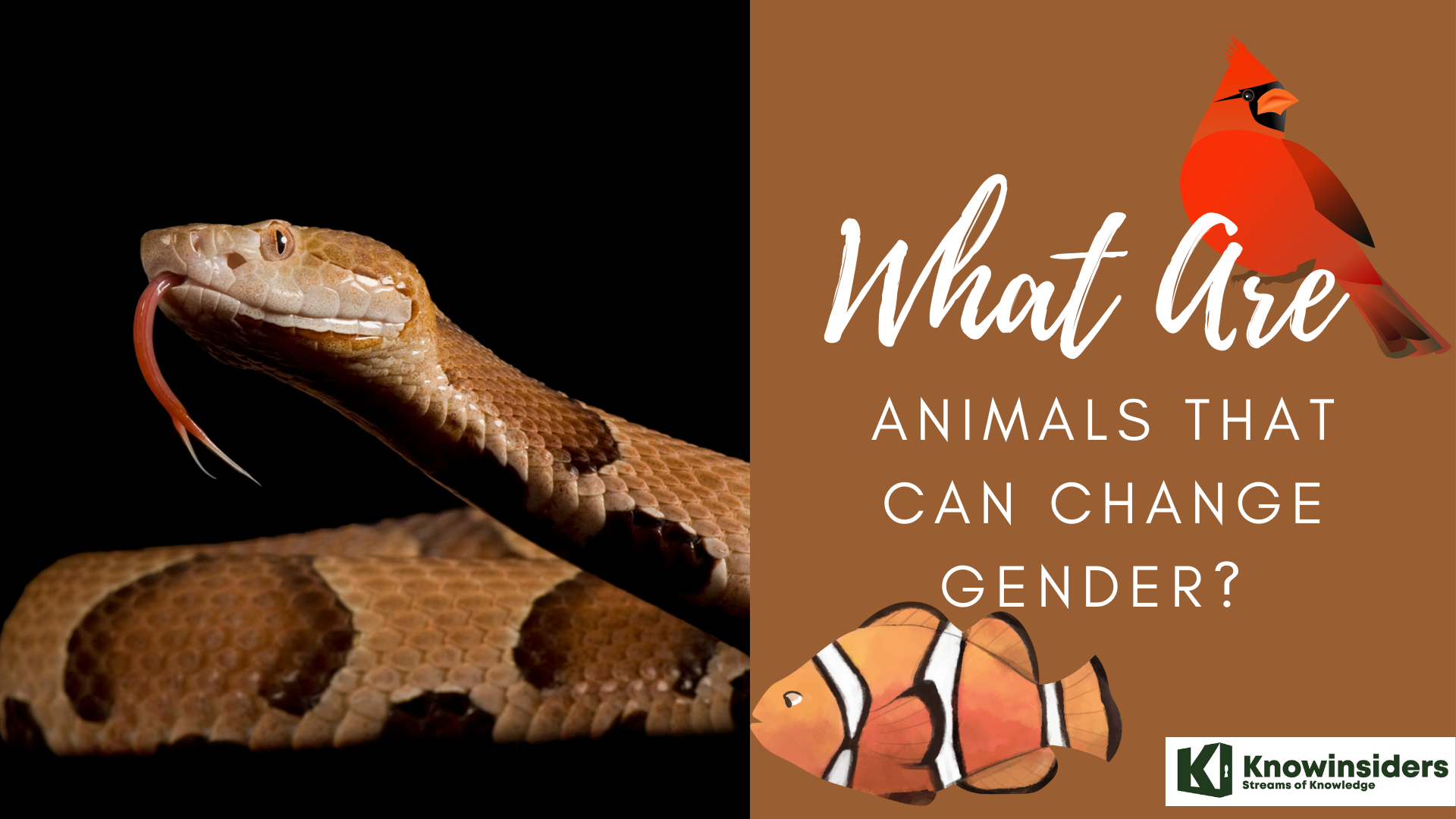 |
| What are animals that can change gender? |
For Mother Nature, biological sex isn’t always an either-or proposition. Some species come with simultaneously functioning female and male organs. Others change from female to male or vice versa, depending on need or surrounding conditions. The reasons behind this fluid mobility are varied: Some are natural processes that offer a species reproductive flexibility, while others aren’t so natural, often sparked by rising global temperatures.
Here are 10 animals that can wonderfully change their gender.
Natural sex change in animals
Sex change is a process by which a living being changes sex – that is, by which female sexual characteristics are substituted for male ones or vice versa.
Sex change may occur naturally, as in the case of the sequential hermaphroditism observed in some species.
Some species exhibit sequential hermaphroditism. In these species, such as many species of coral reef fishes, sex change is a normal anatomical process. Clownfish, wrasses, moray eels, gobies and other fish species are known to change sex, including reproductive functions. A school of clownfish is always built into a hierarchy with a female fish at the top. When she dies, the most dominant male changes sex and takes her place. In the wrasses (the family Labridae), sex change is from female to male, with the largest female of the harem changing into a male and taking over the harem upon the disappearance of the previous dominant male.
Natural sex change, in both directions, has also been reported in mushroom corals. This is posited to take place in response to environmental or energetic constraints, and to improve the organism's evolutionary fitness; similar phenomena are observed in some dioecious plants.
Chickens can sometimes undergo natural sex changes. Normally, female chickens have just one functional ovary, on their left side. Although two sex organs are present during the embryonic stages of all birds, once a chicken's female hormones come into effect, it typically develops only the left ovary. The right gonad, which has yet to be defined as an ovary, testes, or both (called an ovotestis), typically remains dormant. Certain medical conditions can cause a chicken's left ovary to regress. In the absence of a functional left ovary, the dormant right sex organ may begin to grow; if the activated right gonad is an ovotestis or testes, it will begin secreting androgens. The hen does not completely change into a rooster, however. This transition is limited to making the bird phenotypically male. The condition could also be caused by mycotoxins that can develop when animal feed is stored, and these have the same effect as synthetic hormones. In about 10 percent of cases, if eggs fertilized with male chromosomes are cooled by a few degrees for three days after laying, the relative activity of the sex hormones will favour development of female characteristics. The sex chromosomes work by coding for enzymes that affect the bird's development in the egg and during its life. This cooling will produce a chicken with a fully functioning and reproductively fertile female body-type; even though the chicken is genetically male.
The list of top 10 animals that can change gender
10. Bearded Dragons
9. Copperhead Snakes
8. Frogs
7. Cardinals
6. Butterflies
5. Banana Slugs
4. Humphead Wrasse
3. Sea Bass
2. Hawkfish
1. Clownfish
What are the animals that can change gender?
10. Bearded Dragons
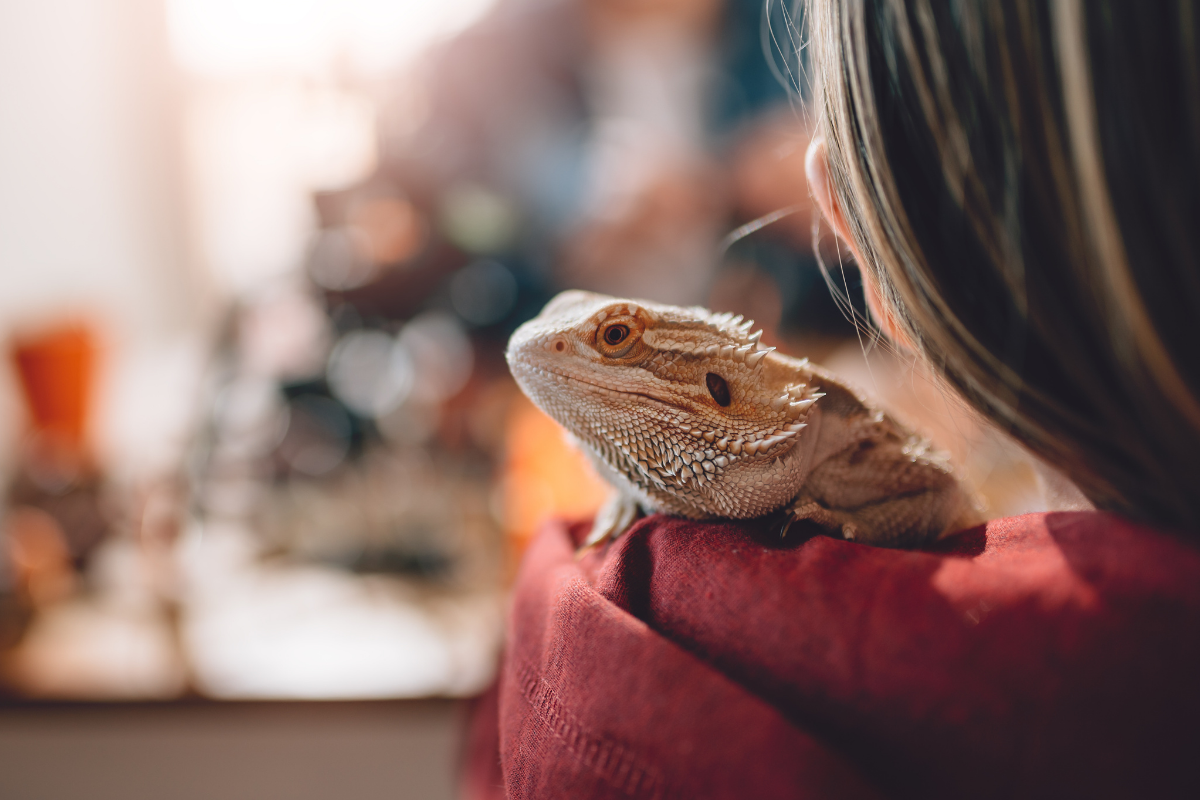 |
| Photo: Getty Images |
The bearded dragon lives up to its name: Like a dragon, it’s equipped with armor of spiny reptilian scales, which include a “beard” of spikes under its chin that puffs up depending on its mood. There are eight species species of bearded dragons recognized today, all of which are affectionately called “beardies.”
Among the most popular pet reptiles, bearded dragons tend to be gentle, inquisitive, and active during the day. The central bearded dragon, Pogona vitticeps, is the most common species to have as a pet.
In the wild, bearded dragons’ range extends across most of Australia. They typically prefer to stick to warm, arid areas: deserts, subtropical woodlands, savannas, and scrublands. In the 1960s, Australia banned the export of wild bearded dragons; however, they’ve been bred in the United States for decades for the pet trade, and they come in a variety of color “morphs” not commonly found in the wild.
A warm habitat is crucial for bearded dragons. They’re cold-blooded and rely on external heat sources to raise their body temperature, which varies according to the temperature of their environment. They bask in the sun to warm themselves and can burrow underground to avoid extreme heat and predators.
The delightful bearded dragons actually perform a sex reversal in the egg. Studies show that when warm temperatures occur during egg incubation, male bearded dragons often reverse course to become female. But it’s not a complete switch. They actually remain male genetically, but act and reproduce like females. What's more, these non-binary lizards lay twice as many eggs as normal females. Male bearded dragons are currently undergoing sex reversal at a rising rate, likely due to the spike in global temperatures.
9. Copperhead Snakes
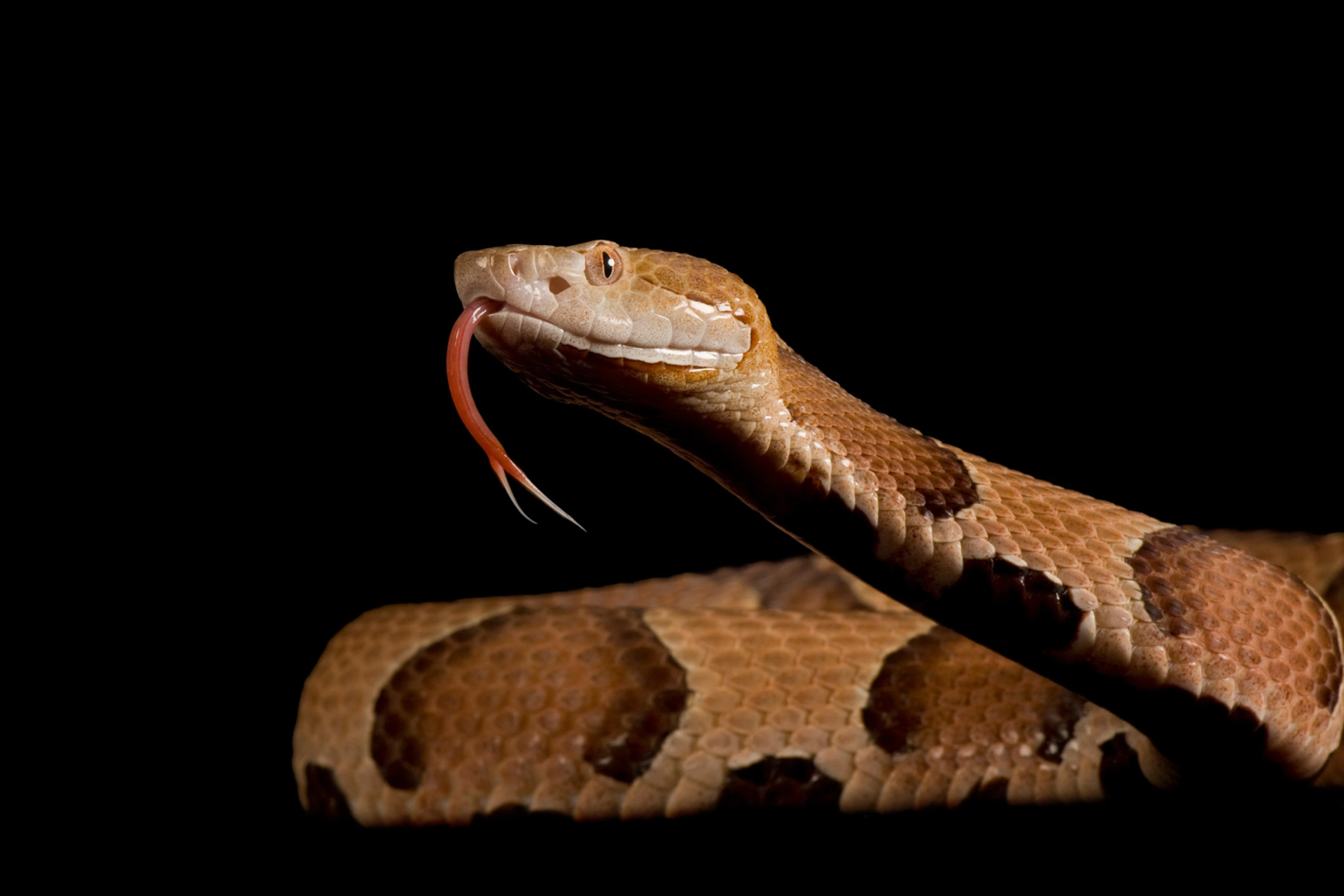 |
| Photo: National Geographic |
Copperheads get their name, unsurprisingly, from their bronze-hued heads.
These large snakes, found through the southern and eastern United States, have bodies that range from tan to copper to gray, with characteristic hourglass-shaped stripes. The reptiles grow to lengths between two and three feet, although there are records of individuals longer than four feet. Their stout bodies abruptly taper toward their thin tails.
The species (Agkistrodon contortrix) is responsible for more venomous snakebites than any other in the United States, in part because they are widespread and populous. They can also tolerate living in subdivisions and developed land, making interactions with humans more common.
Some female snakes, such as copperheads, are capable of virgin birth, or parthenogenesis, meaning the female fertilizes their own eggs without a male sexual partner. While not technically a reversal, this is an ability to carry out the reproductive functions of both sexes at once — and not as a hermaphrodite. With facultative parthenogenesis, a special cell called a polar body that’s produced with an egg sometimes acts like a sperm to “fertilize” it.
8. Frogs
 |
| Photo: Shutterstock |
Frog, any of various tailless amphibians belonging to the order Anura. Used strictly, the term may be limited to any member of the family Ranidae (true frogs), but more broadly the name frog is often used to distinguish the smooth-skinned, leaping anurans from squat, warty, hopping ones, which are called toads.
In general, frogs have protruding eyes, no tail, and strong, webbed hind feet that are adapted for leaping and swimming. They also possess smooth, moist skins. Many are predominantly aquatic, but some live on land, in burrows, or in trees. A number depart from the typical form. Sedge frogs (Hyperolius), for example, are climbing African frogs with adhesive toe disks. The flying frogs (Rhacophorus) are tree-dwelling, Old World rhacophorids; they can glide 12 to 15 metres (40 to 50 feet) by means of expanded webbing between the fingers and toes.
For years, researchers have observed frogs spontaneously changing sex in the lab; now they have done the same studies in the wild. Their work suggests that sex change, complete with fully functioning reproductive organs, may be fairly commonplace among green frog populations. While prior research indicated that sex reversal in frogs may be related to pollution introduced by humans, the same scientists’ current research suggests that the change may be a natural occurrence in amphibians.
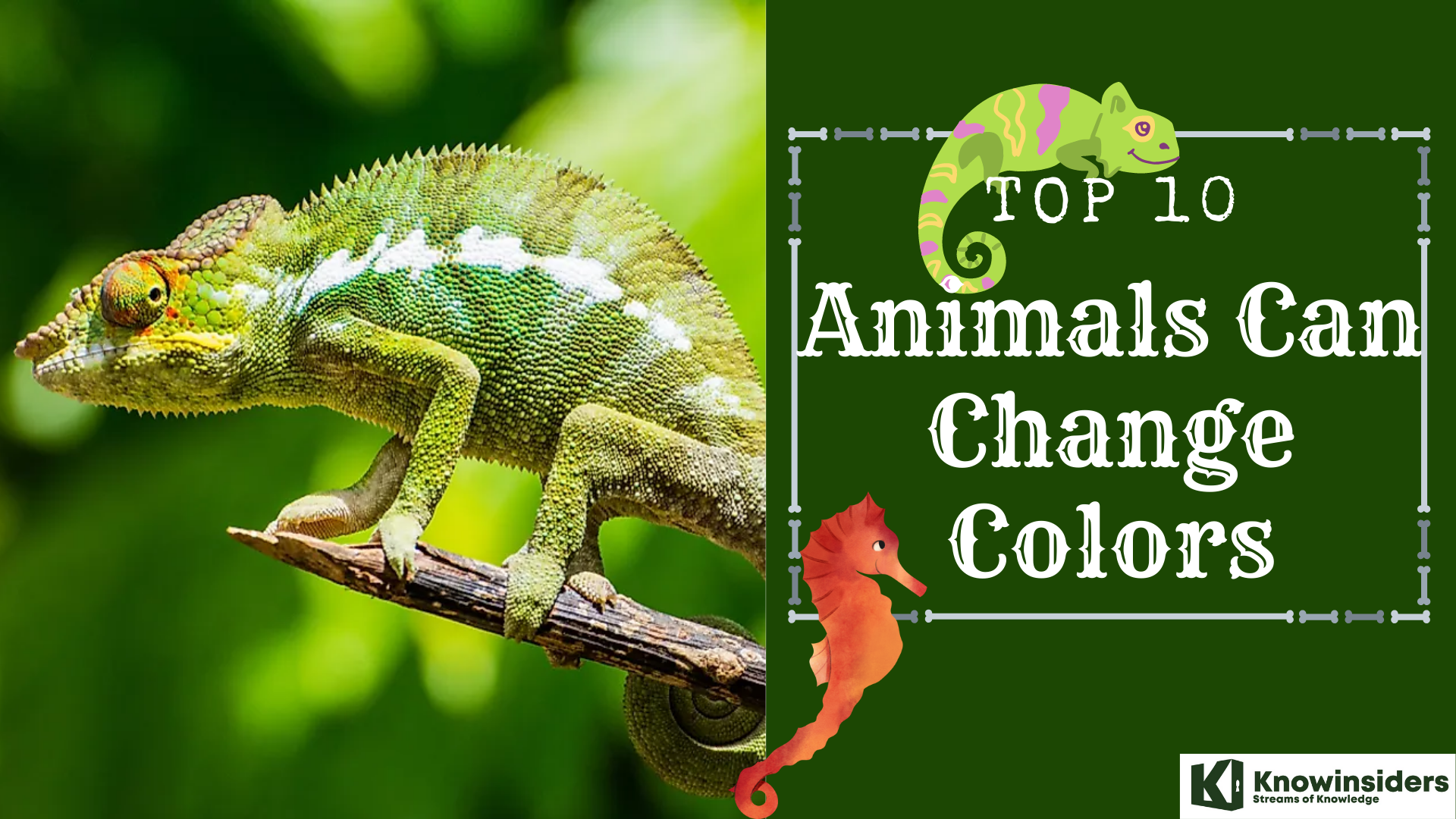 Facts About 10 Animals That Can Change Colors Facts About 10 Animals That Can Change Colors Check out the article below for top 10 animals that can change colors to camorflage themselves from danger, attracting their potential mates and expressing their ... |
7. Cardinals
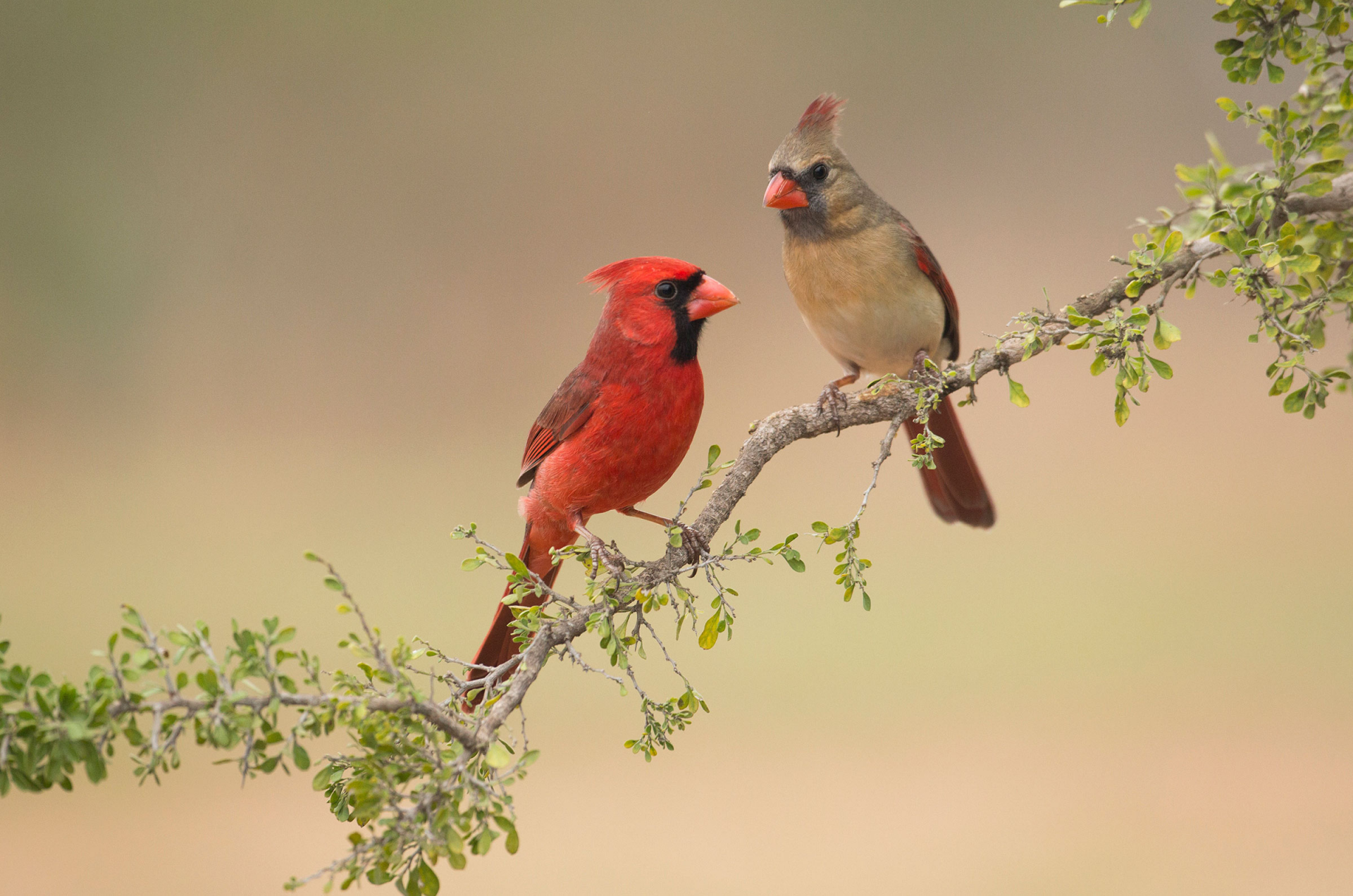 |
| Photo: National Audubon Society |
The northern cardinal is so well loved that it has been named the official bird of no fewer than seven U.S. states. Bright red cardinals are easily identified by even casual bird watchers, and are often seen frequenting backyards and bird feeders. When foraging elsewhere the birds eat insects, seeds, grain, fruit, and sap.
Cardinals, also called “redbirds,” do not migrate and have traditionally been more common in warmer climes such as the U.S. southeast. However, in recent decades they have expanded their common range north through the United States and even into Canada. This population growth may be due to an increase in winter birdfeeders and to the bird's ability to adapt to parks and suburban human habitats.
Only males sport the brilliant red plumage for which their species is known. The color is a key to mating success—the brighter the better. Females are an attractive tan/gray.
Bilateral gynandromorphism also occasionally shows up in northern cardinals. Since male and female cardinals have different coloration, it’s easy to spot a gynandromorph—which has brown-gray "female" feathers on one half and bright red "male" feathers on the other. According to a study, gynandromorph cardinals not only look different, but they also act differently, at least the one researchers observed from 2008 to 2010. During that time, the “half-sider” was never seen vocalizing or mating. On the plus side, other cardinals seemed to accept it: The researchers never witnessed it being mistreated.
6. Butterflies
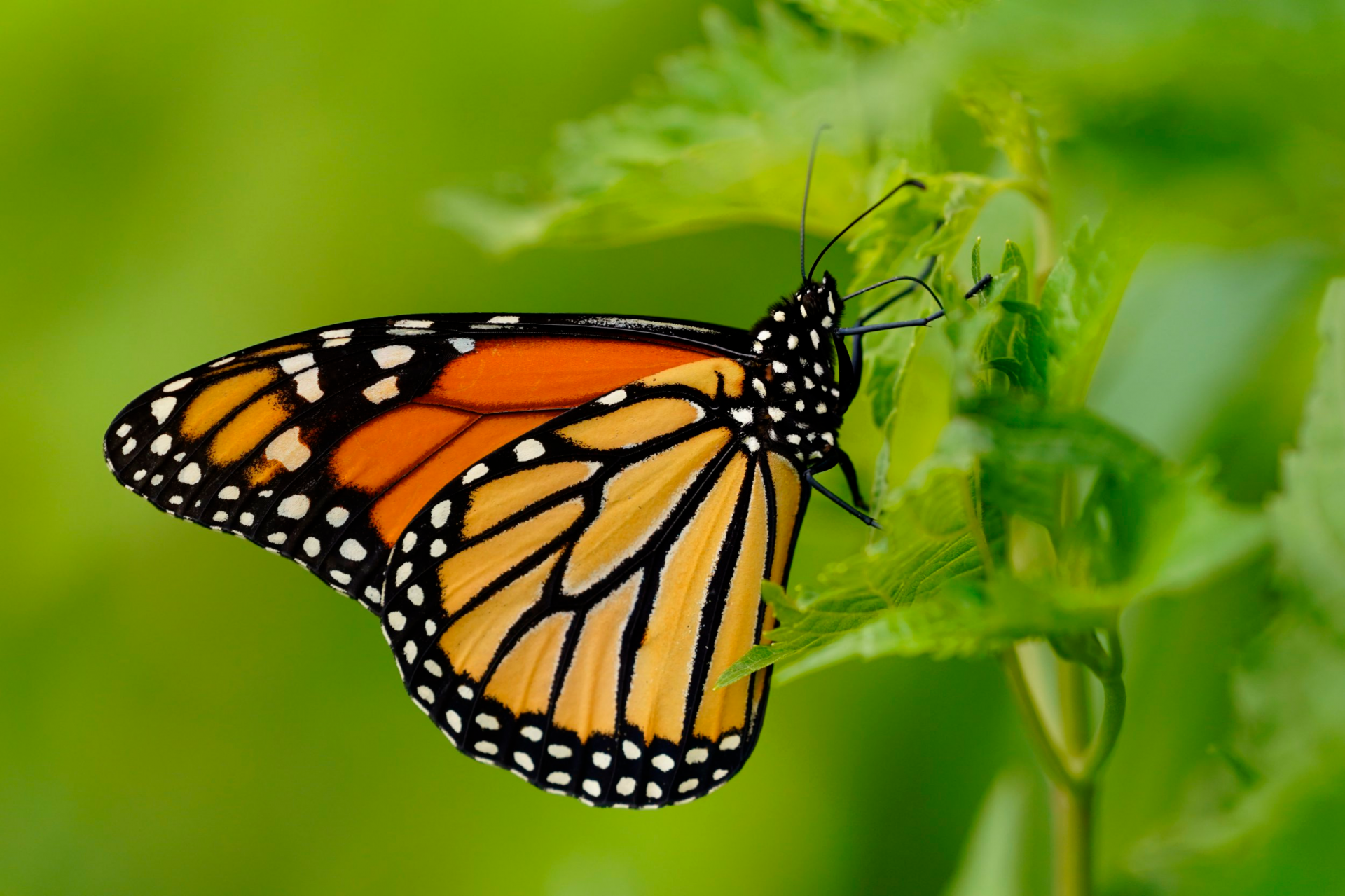 |
| Photo: iNews |
Due to their bright colors and visits to flowers, butterflies are the most familiar of insects to humans. There are about 17,500 species of butterflies in the world, and around 750 species in the United States.
Butterflies (and moths) are the only group of insects that have scales covering their wings, although some butterflies have reduced scales. They differ from other insects also by their ability to coil up their proboscis.
Butterflies are commonly associated with plants, and the relationship is sometimes complex. Immatures, with few exceptions, eat plants, and therefore may be considered harmful to the plants. However, butterflies are very important to many plants that are dependent upon flower-visiting insects for cross-pollination. Most butterfly caterpillars eat one, or sometimes several, related species of plants. Usually the choice is made by the adult female when depositing eggs. Adults usually feed on nectar from flowers of plants, although many butterflies feed instead on rotting fruit, dung, etc., especially in the tropics.
In some creatures, like butterflies, the split is visible over their entire bodies. Some Lycaeides butterflies display a rare dual condition called gynandromorphism that can cause male and female traits to be arranged either haphazardly or bilaterally with one side male and the other equally female. Gynandromorphism is found in crustaceans, insects, birds, and perhaps most spectacularly, in butterflies. This unique phenomenon occurs in approximately one in 10,000 butterflies.
5. Banana Slugs
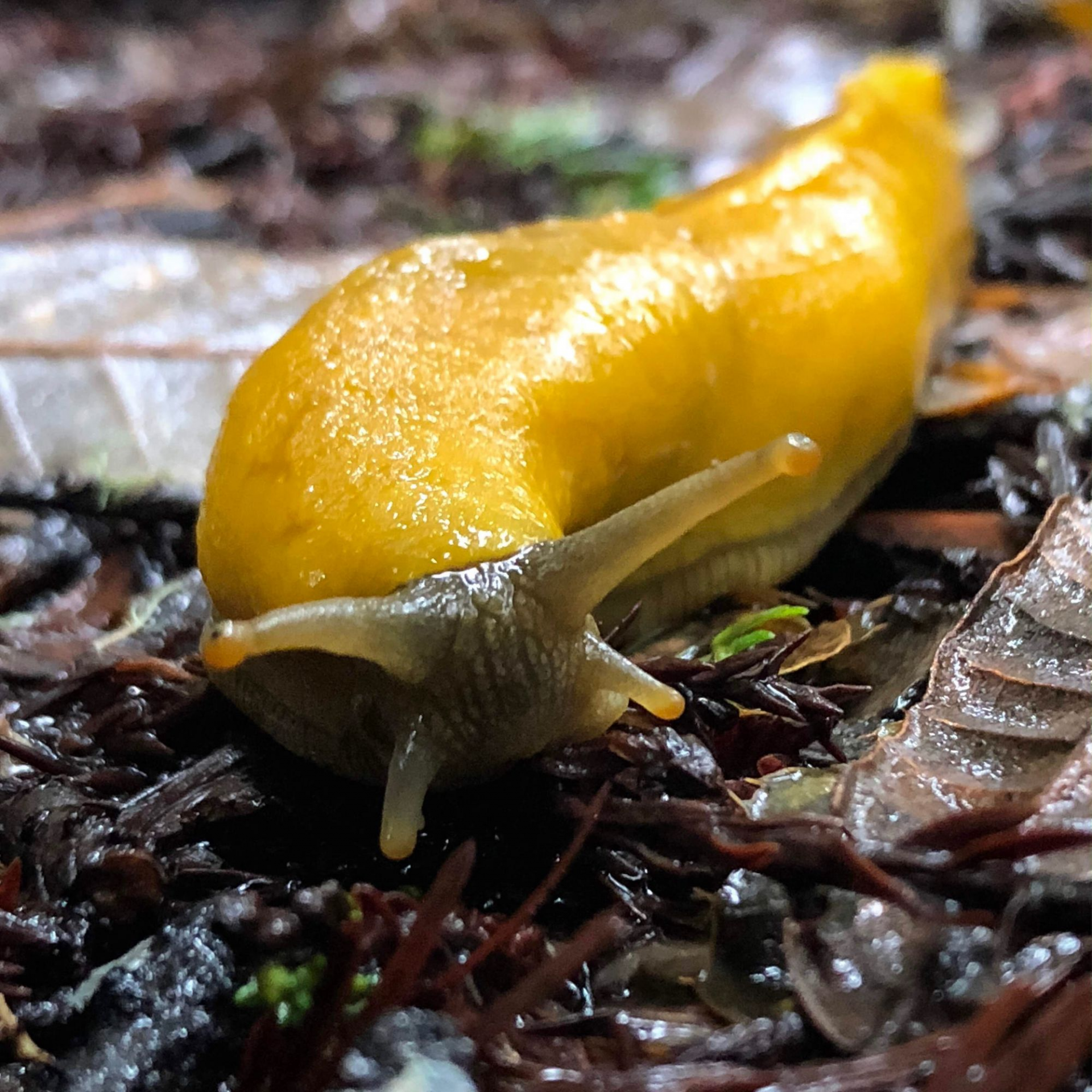 |
| Photo: Getty Images |
The banana slug is named for its resemblance to a ripe (or overripe, in the case of spotted individuals) banana. It’s one of the slowest creatures on Earth, moving at a maximum speed of six and a half inches per minute. The gastropod has one lung, one foot, and no spine.
The slug is native to the dense, moist forest floors of the Pacific Northwest, ranging from Central California to Alaska. One subspecies, the Pacific banana slug, can grow up to 9 inches long, making it the second-largest slug in the world.
The banana slug is often bright yellow, though it can be brown, white, and green. Like all slugs, banana slugs use four tentacles to sense their environment. A pair of upper tentacles, protruding from the top of their heads, are optical. Tiny black dots, or “eyes,” at the ends of the tentacles detect light and movement. A pair of smaller, lower tentacles, protruding straight out in front of their “face” are able to feel and smell. If a banana slug loses a tentacle to a predator or accident, it’s able to grow back.
Bright yellow and up to 10 inches long, these wormlike mollusks are simultaneous hermaphrodites, meaning they don't change back and forth, but use their male and female reproductive organs at the same time. Although capable of self-fertilization, most banana slugs prefer to find a partner. When it comes time to mate, two slugs curl around one another and engage in a reciprocal exchange of sperm that fertilizes each slug's eggs.
 Amazing Facts About The Fastest Animals In The World Amazing Facts About The Fastest Animals In The World To learn about what are the fastest animals in the world, keep reading the article below. |
4. Humphead Wrasse
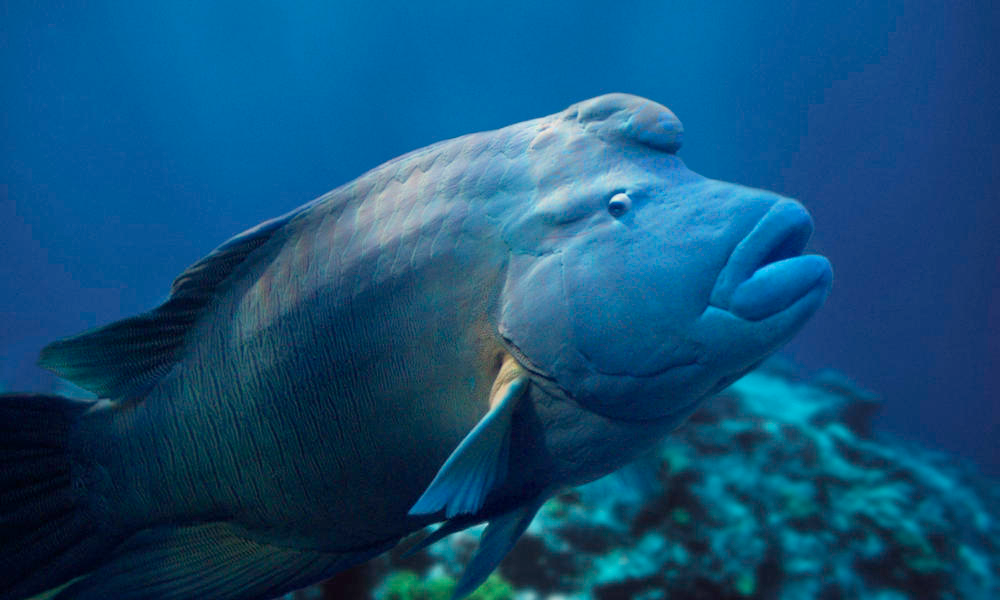 |
| Photo: Getty Images |
The colossal, colorful humphead wrasse (also known as the Napoleon wrasse) is one of the largest fish found in coral reefs. They are easily identifiable by their thick lips and the prominent bump on their foreheads. The coloring of adult humphead wrasses can range from a dull blue-green to brilliant shades of green or purplish-blue. Juveniles are white with dark scale bars and prominent black lines near their eyes.
Their coloring isn’t the only major change humphead wrasses undergo as they age. Like all wrasses, humphead wrasses can change sex; some individuals that start their lives as females may later transition to male. The factors that influence this amazing transformation are still being studied.
Beginning at about 9 years of age, the humphead wrasse is able to change from female to male. Along with sex, the coloration of the humphead wrasse will change from reddish orange (female) to blue-green (male). Although they can live for 30 years, humphead wrasse are endangered due to overfishing, export trade, and threats to their coral reef habitat.
3. Sea Bass
 |
| Photo: Wikipedia |
Sea bass, (family Serranidae), any of the numerous fishes of the family Serranidae (order Perciformes), most of which are marine, found in the shallower regions of warm and tropical seas. The family includes about 475 species, many of them well-known food and sport fishes. Although the term sea bass may be used for the family as a whole, the fishes themselves bear a variety of names, such as hamlet, hind, cony, graysby, grouper, and jewfish, as well as sea bass and bass.
Sea bass are rather perchlike fish. The more or less elongated body has small scales, the mouth is large, and the tail is generally straight-edged or rounded. The dorsal fin, a diagnostic feature, consists of a forward, spiny section and a hinder, soft-rayed section; the two portions are usually joined but may be separated by a notch.
Black sea bass, found throughout the U.S. from Maine to the Florida Keys, are protogynous hermaphrodites, animals that can change from female to male. Because the sea bass population is spread over a large range, it is difficult for scientists to observe their reproductive behavior in their natural habitat. However, research of sea bass in tanks has revealed that the sex change may be related to supply and demand. When female sea bass observe a decrease in the male population in an adjacent tank, they switch.
2. Hawkfish
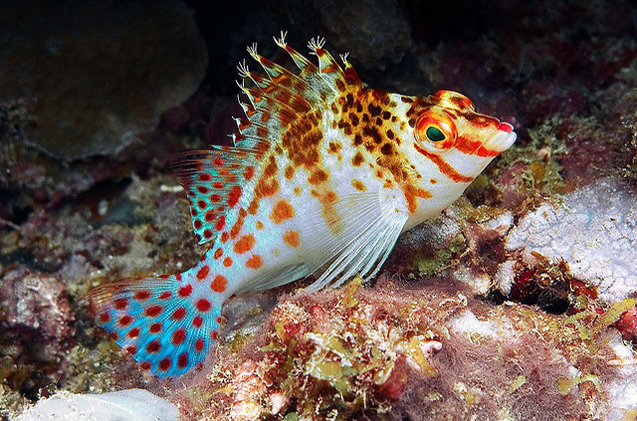 |
| Photo: PetGuide |
Cirrhitidae, the hawkfishes, are a family of marine perciform ray-finned fishes found in tropical seas and which are associated with coral reefs.
The Cirrhitidae were first recognised as a family by the Scots-born Australian naturalist William Sharp Macleay in 1841. It is one of the 5 constituent families in the superfamily Cirrhitoidea which is classified in the suborder Percoidei of the order Perciformes. Within the Cirrhitoidea, the Cirrhitidae is probably the most basal family. They have been placed in the order Centrarchiformes by some authorities, as part of the superfamily Cirrhitoidea, however, the 5th edition of Fishes of the World does not recognise the Centrarchiformes. The name of the family is taken from that of the genus Cirrhitus which is derived from cirrhus meaning a "lock of hair" or "a barbel", thought to be a reference to lower, unbranched rays of the pectoral fins which Bernard Germain de Lacépède termed as “barbillons”, which means "barbels" in his description of the type species of the genus C. maculatus, and which he thought to be “false” pectoral fins. Another possibility is that the name name refers to cirri extending from the tips of the spines in the dorsal fin spines, although Lacépède did not mention this feature.
These vibrantly colored harem dwellers are protogynous, starting off as females that can morph into males when conditions call for it. Typically, this happens when the harem’s male leader takes on too many females, prompting the largest female to turn into a male hawkfish and split away with half the harem.
But that’s not the hawkfish’s only trick. Unlike most other sequential hermaphrodites that make the switch and stick with it, hawkfish can switch back again. Female-turned-male hawkfish may revert to female if, say, their new harem loses too many females or if a larger male challenges them.
1. Clownfish
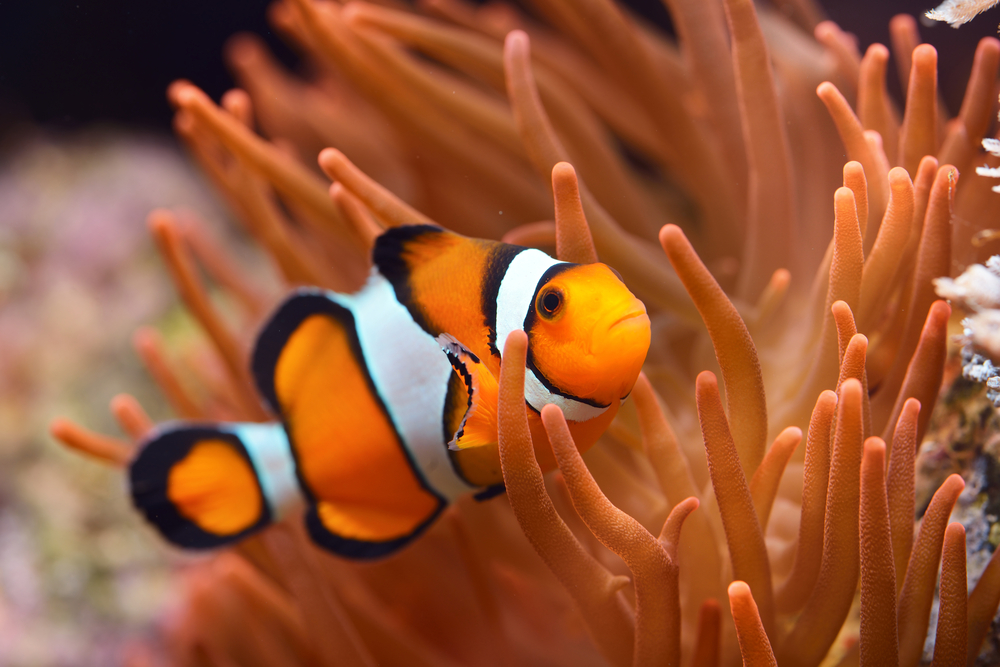 |
| Photo: Getty Images |
Bright orange with three distinctive white bars, clown anemonefish are among the most recognizable of all reef-dwellers. They reach about 4.3 inches in length, and are named for the multicolored sea anemone in which they make their homes.
Clownfish perform an elaborate dance with an anemone before taking up residence, gently touching its tentacles with different parts of their bodies until they are acclimated to their host. A layer of mucus on the clownfish's skin makes it immune to the fish-eating anemone's lethal sting. In exchange for safety from predators and food scraps, the clownfish drives off intruders and preens its host, removing parasites.
There are at least 30 known species of clownfish, most of which live in the shallow waters of the Indian Ocean, the Red Sea, and the western Pacific. They are not found in the Caribbean, Mediterranean, or Atlantic Ocean.
Bright orange with three white bars, clownfish are sequential hermaphrodites, born one sex but able to switch to the other if necessary. In this case, the about-face, which is called protandry, runs from male to female.
Here’s how it works: Clownfish live in groups where only two members are sexually mature, a large male and an even larger female. The rest are smaller, sexually immature males. If something happens to the female in the breeding pair, her male mate transforms into a female and selects the next biggest male in the group to become her new partner.
 Top 10 Most Popular Pets In the UK Top 10 Most Popular Pets In the UK Keep reading the article below for top 10 most popular and loved pets in the UK. |
 Top 10 Most Popular Pets in Australia Top 10 Most Popular Pets in Australia To know more about 10 best popular pets in Australia, keep reading the article below. |
 Top 10 Most Popular Pets In The United States Top 10 Most Popular Pets In The United States Pets are the best companions of the Americans, and there are many different type of pets, from big to small. Keep reading to know more ... |
 Top 10 Most Popular Pets In The World Top 10 Most Popular Pets In The World Pets are human's best companions, and are globally loved and kept in household. Here is the 10 most popular pets in the world. |


























